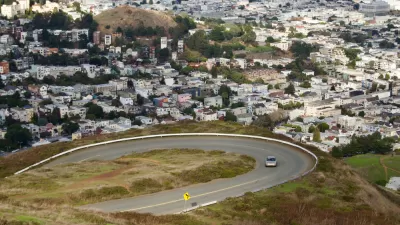Data show that cars are more effective than transit in providing poor people to jobs and economic opportunity. But does that mean transit systems are fundamentally inadequate or just currently inadequate?

Scott Beyer cites a number of studies, from a 2011 study by the Brooking Institute to a 2014 study by the Urban Institute, to argue that cars are a better investment than transit for improving economic mobility.
"Of course, these ideas can be challenging to urban planners, who cling to the default assumption that cities must improve mass transit to reduce poverty. If existing services remain inadequate, then planners use it as an argument for more funding. But what if some of the money went instead towards increasing automobile access? Would that not better help economic conditions for the poor?"
Beyer's article piggybacks on an April article on the Washington Post's Wonkblog, but with a slightly different frame. That is, Beyer's argument is more anti-transit, citing the bus system in Charlottesville, Virginia as a model of inefficiency and supporting Wendell Cox's arguments for subsidizing car ownership.
FULL STORY: How Cars, Not Subways, Will Make Us Richer

Manufactured Crisis: Losing the Nation’s Largest Source of Unsubsidized Affordable Housing
Manufactured housing communities have long been an affordable housing option for millions of people living in the U.S., but that affordability is disappearing rapidly. How did we get here?

Americans May Be Stuck — But Why?
Americans are moving a lot less than they once did, and that is a problem. While Yoni Applebaum, in his highly-publicized article Stuck, gets the reasons badly wrong, it's still important to ask: why are we moving so much less than before?

Using Old Oil and Gas Wells for Green Energy Storage
Penn State researchers have found that repurposing abandoned oil and gas wells for geothermal-assisted compressed-air energy storage can boost efficiency, reduce environmental risks, and support clean energy and job transitions.

Greening Oakland’s School Grounds
With help from community partners like the Trust for Public Land, Oakland Unified School District is turning barren, asphalt-covered schoolyards into vibrant, green spaces that support outdoor learning, play, and student well-being.

California Governor Suspends CEQA Reviews for Utilities in Fire Areas
Utility restoration efforts in areas affected by the January wildfires in Los Angeles will be exempt from environmental regulations to speed up the rebuilding of essential infrastructure.

Native American Communities Prepare to Lead on Environmental Stewardship
In the face of federal threats to public lands and conservation efforts, indigenous groups continue to model nature-centered conservation efforts.
Urban Design for Planners 1: Software Tools
This six-course series explores essential urban design concepts using open source software and equips planners with the tools they need to participate fully in the urban design process.
Planning for Universal Design
Learn the tools for implementing Universal Design in planning regulations.
Heyer Gruel & Associates PA
City of Moreno Valley
Institute for Housing and Urban Development Studies (IHS)
City of Grandview
Harvard GSD Executive Education
Salt Lake City
NYU Wagner Graduate School of Public Service
City of Cambridge, Maryland




























